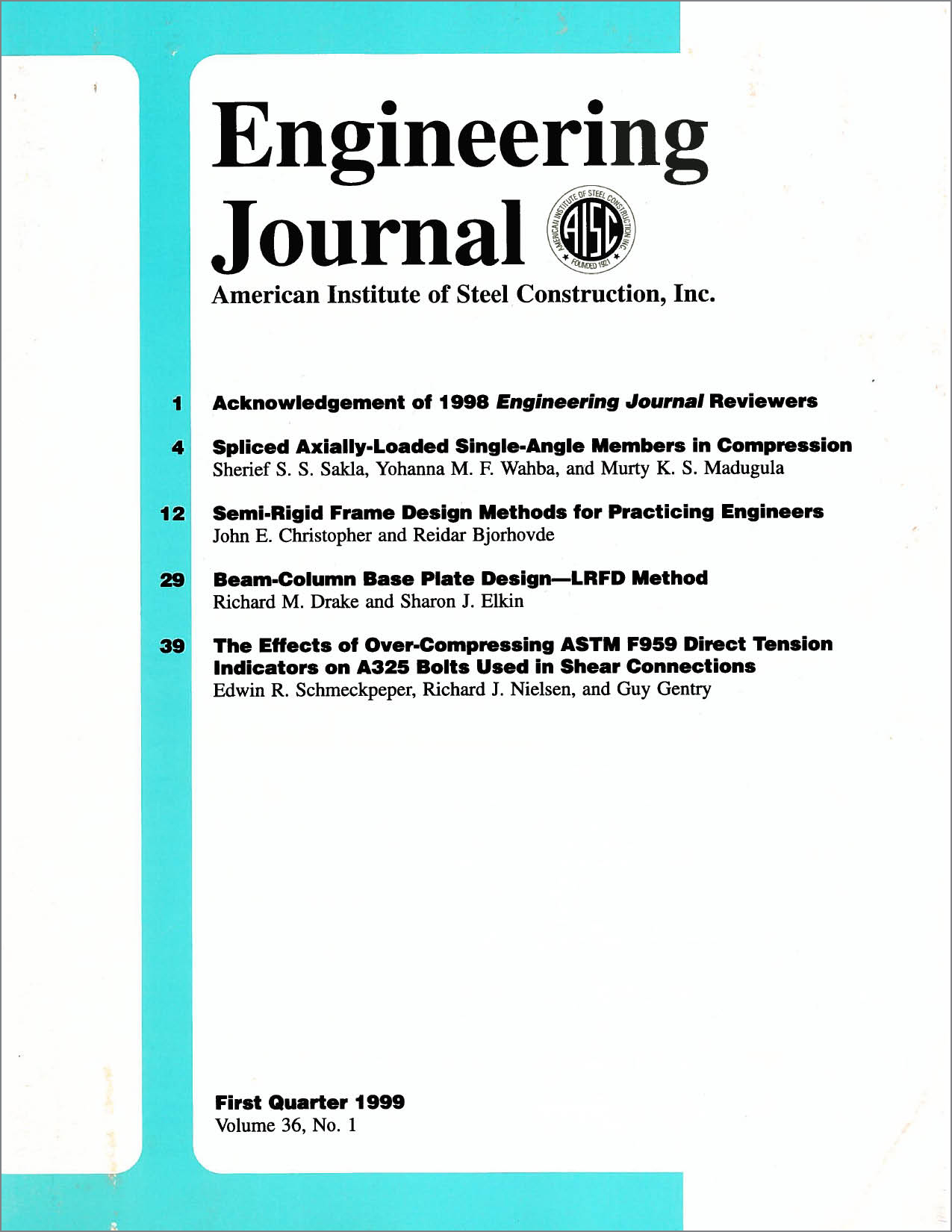The Effects of Over-Compressing ASTM F959 Direct Tension Indicators on A325 Bolts Used in Shear Connections
DOI:
https://doi.org/10.62913/engj.v36i1.713Abstract
Direct tension indicators (DTIs) are one alternative method that is commonly used to verify that high-strength bolts have been properly tensioned during installation. This research attempts to resolve question concerning the use of bolts which may have been over tensioned, as evidenced by DTIs which were completely flattened to zero DTI gaps. A variety of bolt and DTI combinations were tested to determine how far the nuts could rotate before the bolt fractured. Sets of bolts and buts could rotate before the bolt fractured. Sets of bolts and nuts with DTIs were then tensioned to the point of incipient failure and tested in single and double shear. These tests indicated there was no significant decrease in the single and double shear strengths of these over-tensioned bolts. In addition, a series of tests compared the performance of the DTIs manufactured per ASTM F959-90 to those manufactured per ASTM F959-96. These tests indicated that the F959-96 DTIs exhibit less variability and indicate higher preloads at the specified DTI gaps compared to those manufactured to F959-90

